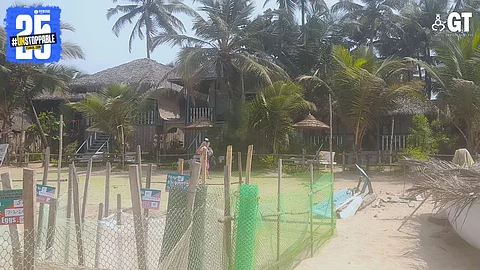

Apart from being a smooth platform for tourists coming to enjoy the sun, sand, sea and everything there is in the tourism basket, Goa also attracts Olive Ridley turtles. Between December 2024 and March 2025, 318 turtles came ashore, as per Forest Department data.
These 318 turtles laid 32,304 eggs which were spread in the three hatcheries of the Forest Department in Morjim in the North and Agonda and Galgibaga in the South.
Of these, 16,555 hatchlings were released in the water after 50 days of incubation period, but 15,749 could not see the light of day, a big number, the reasons for which need to be studied.
It appears, from figures available, that the turtles prefer the beaches in the North in comparison to the South—18,243 eggs were laid in the North in comparison to the 14,061 in the South.
The success rate of breeding in the South was 39.4 percent in comparison to the 60 odd percentage registered at the hatchery in Tembwada at Morjim with the all-Goa percentage touching 51 percent.
“Hatchlings from eggs incubated in a natural nest were larger, exhibited faster neuronal development and performed better on motor activity test than those from eggs that were incubated in a hatchery,” claims science journalist Margaret Osborne whose work was published in Sag Harbor Express.
Though there is no scientific study by the Forest Department, a study published on June 13 in Frontiers in Ecology and Evolution states, “Off-site or ex-situ incubation may negatively affect the developing turtles.”
Turtle guards in Goa, however, blame the weather conditions for the high number of unhatched turtles. However, they were unable to justify their explanations scientifically.
“The early and unexpected pre-monsoon showers must have caused the death of many hatchlings as once it rains the sand becomes hard and it becomes difficult for the hatchlings to come to surface,” explained forest guard Atmaram Gauns.
Early monsoons rains lashed the State in the last week of May, a time by when most hatchlings would have crawled to the shores.
This season, turtles came ashore to nest not just in the usual northern beaches like Arambol and Morjim, but even in Dona Paula—a rare occurrence that has prompted herpetologists to urge the Forest Department to minimise long-distance egg translocation.
“While relocating the eggs may have influenced the outcomes, the authors believe that external factors such as temperature, moisture, and silt levels played a more significant role,” states the published study.
“Relocating nests,” according turtle enthusiast Denzil Sequeira from Mandrem, “should only be done if the nest is in imminent danger of poaching, flooding by high tide or other similar factors.”
Though there has been an increase in number of turtles walking ashore, Mhairi Beach, better known as Dream Beach in Vagator, saw a drop in number. Turtle lovers believe it is because of the disturbance caused by all-night trance parties and bursting of firecrackers.
With Olive Ridley turtles walking ashore and the media picking up their crawl marks with earnest, turtles and a majority of tourists seem to have found a way to live together in harmony.